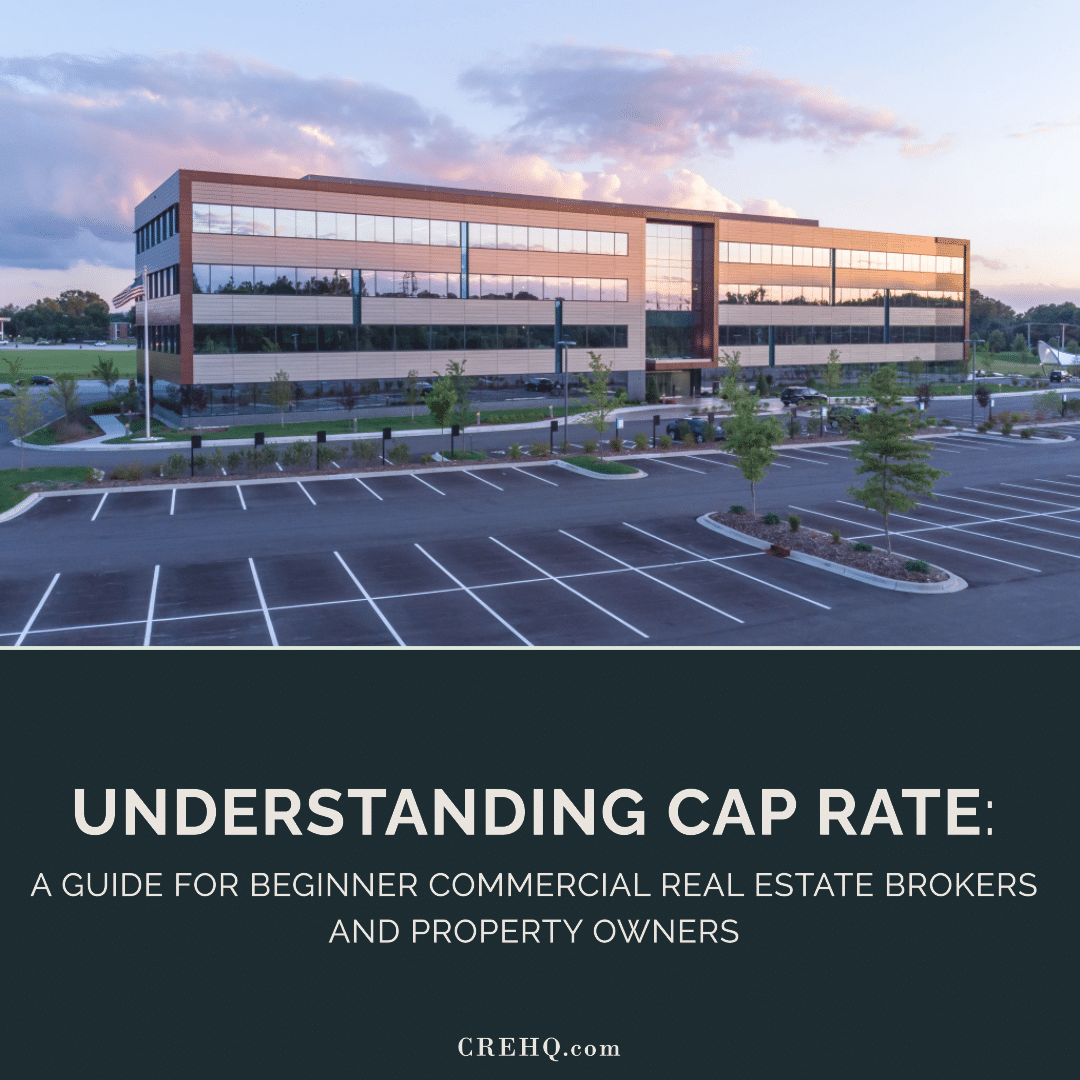
Understanding Cap Rate: A Beginner’s Guide for Commercial Real Estate Brokers
In the world of commercial real estate, one of the essential metrics that brokers and investors rely on is the cap rate, or capitalization rate. The cap rate is a fundamental tool for evaluating investment opportunities and estimating potential returns. In this article, we will demystify the concept of the cap rate, explain its significance, provide examples, and explore the formulas used to calculate it. Whether you're a beginner or a new commercial real estate broker, understanding cap rates is crucial for making informed investment decisions.
What is Cap Rate? Cap rate represents the relationship between a property's net operating income (NOI) and its market value or purchase price. It measures the rate of return an investor can expect from a property without considering financing or taxes. Essentially, the cap rate helps assess the profitability and risk associated with a commercial real estate investment.
The Formula: Cap Rate = Net Operating Income (NOI) / Property Value
Example Scenario: Let's consider an example to understand the cap rate better. Imagine a commercial property that generates an annual net operating income of $100,000. The market value of the property is estimated at $1,500,000. Applying the cap rate formula:
Cap Rate = $100,000 / $1,500,000 = 0.067 or 6.7%
This means that the cap rate for this property is 6.7%. Investors can anticipate a 6.7% return on their investment based on the property's current income.
Interpreting Cap Rates: Cap rates provide valuable insights into a property's profitability and market conditions. Here are some key points to consider when interpreting cap rates:
- Relationship with Property Value: Cap rates have an inverse relationship with property values. A higher cap rate implies a lower property value, while a lower cap rate suggests a higher value.
- Risk and Return: Generally, higher cap rates indicate higher risk and potentially higher returns, while lower cap rates suggest lower risk and more stable income streams.
- Property Type and Location: Cap rates can vary significantly depending on property type (retail, office, industrial) and location. Factors like market demand, local economy, and market trends influence cap rates.
- Market Comparisons: Brokers often use cap rates to compare similar properties in a specific market. By analyzing cap rates, they can identify overvalued or undervalued properties and advise their clients accordingly.
Limitations of Cap Rate: While cap rates are a useful tool, it's important to recognize their limitations:
- Simplified Analysis: Cap rates provide a simplified view of a property's financial performance, ignoring factors like financing costs, taxes, and potential future growth.
- Market Fluctuations: Cap rates can fluctuate with changes in market conditions, property performance, and investor sentiment. It's crucial to consider these factors and conduct thorough due diligence.
The cap rate is a vital concept in commercial real estate, enabling brokers and investors to evaluate investment opportunities and estimate potential returns. By understanding the formula, interpreting cap rates, and considering their limitations, brokers can guide their clients towards informed investment decisions. Remember, cap rates should be used in conjunction with comprehensive analysis and market knowledge to gain a holistic understanding of a property's financial potential.